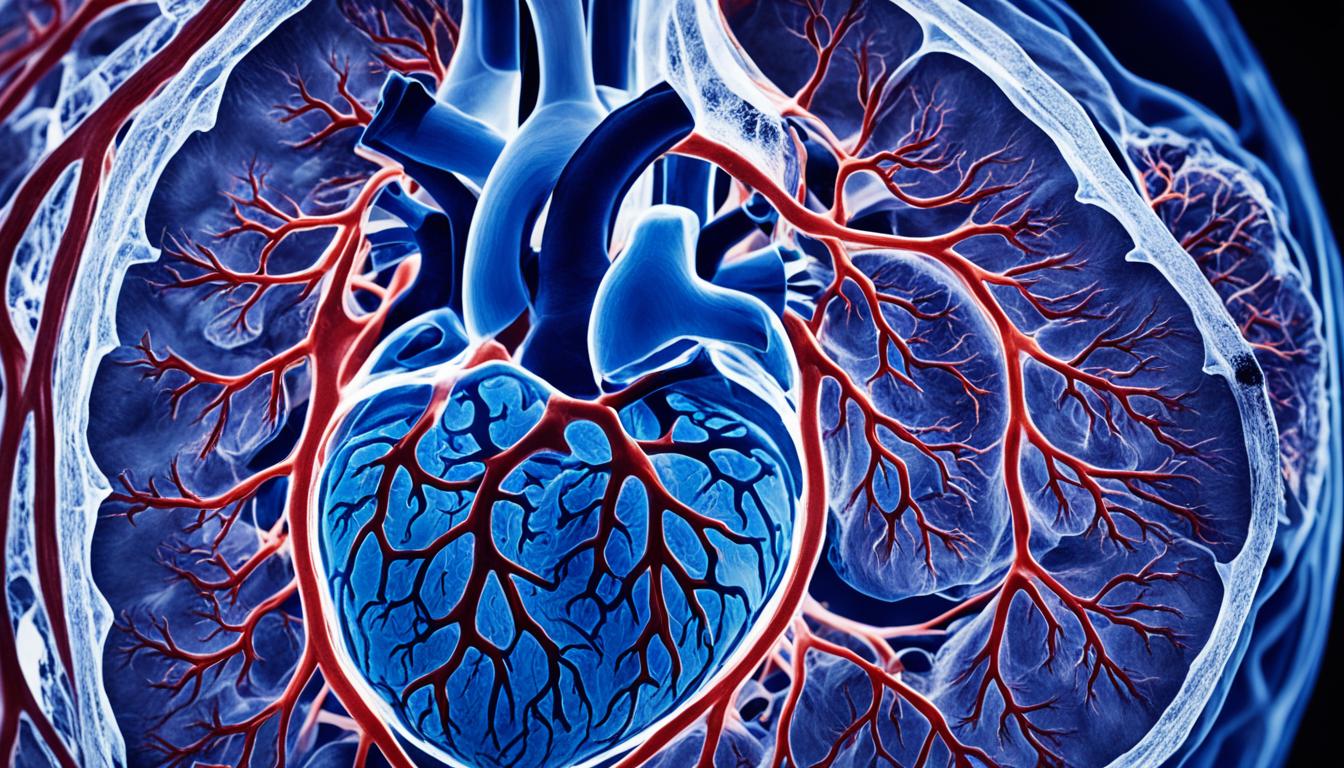Pulmonary atresia is a congenital heart defect. It stops the pulmonary valve from forming correctly. This leads to a block in blood flow from the heart to the lungs. Babies born with this have a small right ventricle. They must use other routes in the heart to get oxygenated blood.
Common signs of pulmonary atresia are skin that looks blue or gray. The baby may breathe quickly, tire it easily, and not feed well. The exact cause of this condition is not fully known. Yet, things like too much weight, drinking alcohol or smoking, and diabetes seem to play a part.
If left untreated, pulmonary atresia can be deadly. Doctors can do heart surgery to fix the valve. They may also give medicines to help the heart work better. Stem cell therapy is a new method to treat this. It is showing good results.
Key Takeaways:
- Pulmonary atresia is a congenital heart defect that affects the proper formation of the pulmonary valve.
- Symptoms include blue or gray skin, fast breathing, easy exhaustion, and poor feeding.
- Risk factors such as obesity, alcohol or tobacco use, and diabetes may increase the likelihood of pulmonary atresia.
- Treatment options include heart surgery, medications, and emerging stem cell therapy.
- Stem cell therapy shows promise in improving the long-term outcomes for individuals with pulmonary atresia.
Diagnosis and Complications of Pulmonary Atresia
Pulmonary atresia is a serious heart problem from birth. It’s crucial to find it early and treat it right. Doctors use the baby’s symptoms, tests, and procedures to spot it.
When a baby shows signs like blue skin or fast breathing, doctors act fast. They use tests like echocardiography to confirm the issue. This test shows the heart’s shape and how well it works.
Echocardiography is safe. It shows the heart in detail with sound waves. It helps plan the best treatments. Sometimes, more tests are needed for a full heart check-up.
Without timely intervention, pulmonary atresia can lead to various complications that affect heart function and overall health. Common complications include:
- Bacterial infection of the heart (endocarditis)
- Irregular heartbeats (arrhythmias)
- Heart failure due to weakened heart function
After surgery, regular visits to the doctor are a must. They check for any troubles early. This makes it easier to treat them right away.
| Complications | Impact |
|---|---|
| Bacterial infection of the heart (endocarditis) | Can result in systemic infection and damage to cardiac structures |
| Irregular heartbeats (arrhythmias) | May disrupt blood flow, worsening symptoms and impairing overall heart function |
| Heart failure | Weakens heart function, leading to poor oxygenation and reduced quality of life |
Stem Cell Therapy for Pulmonary Atresia
Stem cell therapy and tissue engineering are becoming key in treating congenital heart diseases like Pulmonary Atresia. They aim to use living materials made from cell grafts. These materials can grow and change with the heart of the patient. This includes things like cardiac stem cells and vascular progenitors, which might help fix heart damage and boost the pulmonary valve’s work.
Research is looking at using scaffolds combined with stem cells. This could make grafts better than current surgical ones. By using the natural healing powers of stem cells, experts want to improve how we treat Pulmonary Atresia. But we should remember, using stem cells here is still new. More research is needed to know if it’s truly safe and effective.
Even though we are still learning, stem cell therapy offers hope to patients and families dealing with Pulmonary Atresia. The approach keeps getting better over time. It’s likely that as research moves forward, custom stem cell treatments and tissue engineering will help a lot. These may vastly improve the life quality and long-term health of those with this heart disease.

